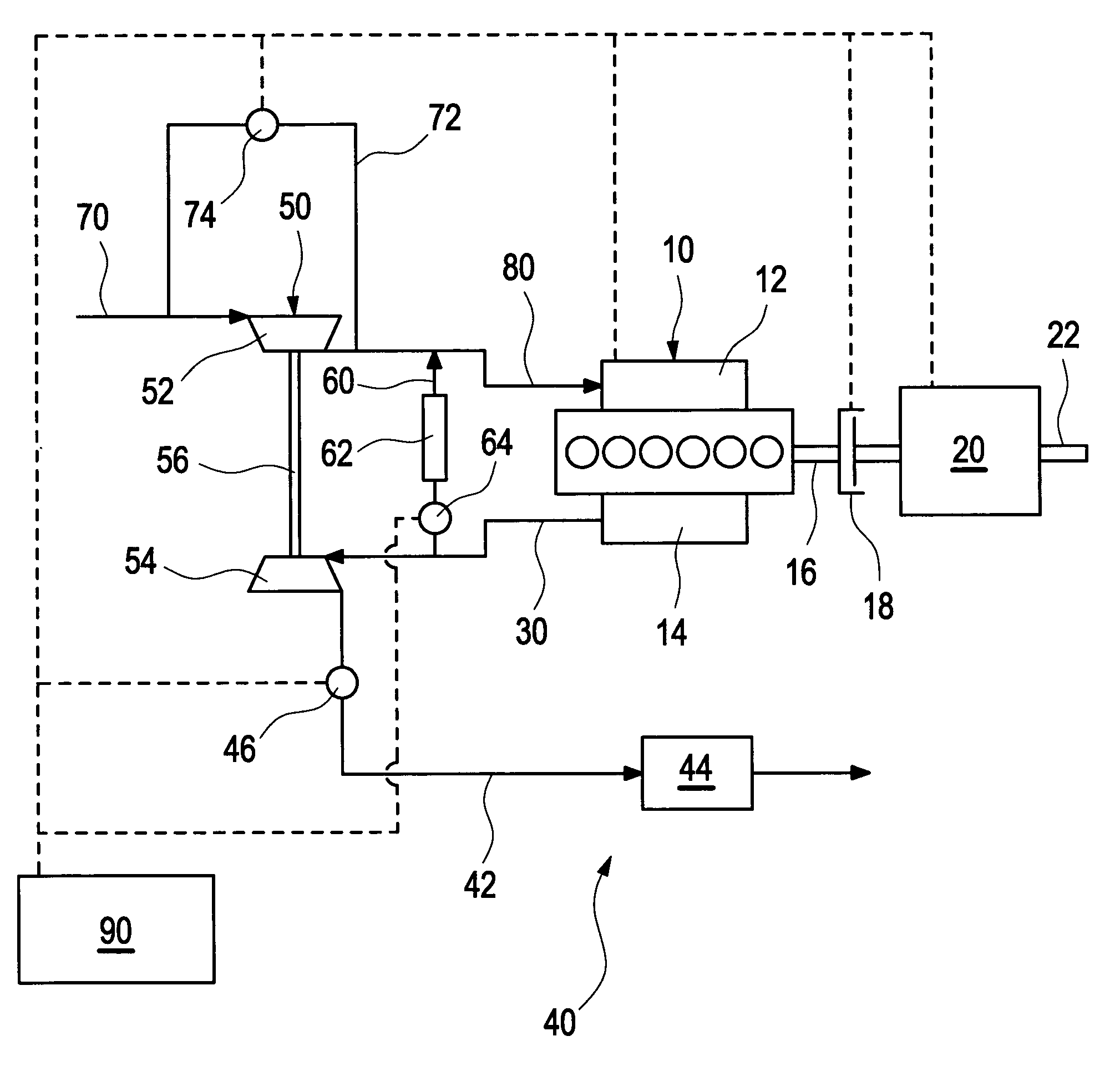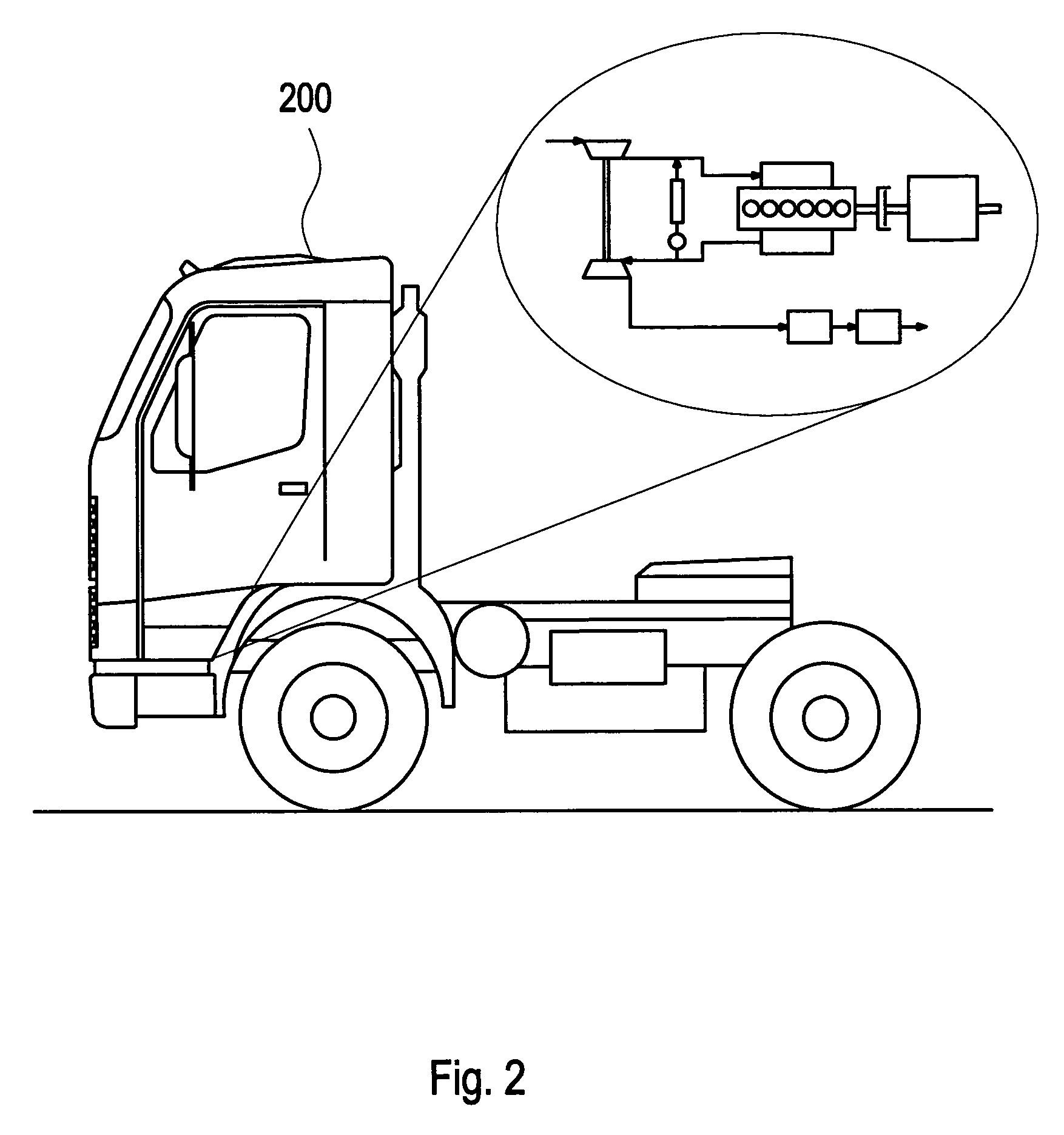Method for controlling an exhaust gas temperature
a technology of exhaust gas and temperature control, which is applied in the direction of electric control, machines/engines, instruments, etc., can solve the problems of low exhaust gas temperature during motoring and light engine braking, inability to work with nox reduction systems, and interruption of regeneration of particulate filters, so as to reduce the overall emissions of the vehicle, reduce the exhaust cleaning efficiency, and achieve sufficient efficiency
- Summary
- Abstract
- Description
- Claims
- Application Information
AI Technical Summary
Benefits of technology
Problems solved by technology
Method used
Image
Examples
Embodiment Construction
[0019]In the drawings, equal or similar elements are referred to by equal reference numerals. The drawings are merely schematic representations, not intended to portray specific parameters of the invention. Moreover, the drawings are intended to depict only typical embodiments of the invention and therefore should not be considered as limiting the scope of the invention.
[0020]FIG. 1 depicts schematically an example embodiment of an arrangement comprising a combustion engine 10 and an exhaust gas aftertreatment system 40 which is operated with a method according to the invention. FIG. 2 displays a vehicle 200 employing the method. The vehicle 200 is preferably a light, medium of heavy duty vehicle such as a truck.
[0021]The engine 10 comprises an intake manifold 12 for air compressed by a compressor 52 of a turbocharger 50 and fed via air pipe 80 and an exhaust manifold 14 for discharging exhaust gases to a turbine 54 of the turbocharger 50 via an exhaust pipe 30 and the exhaust gas a...
PUM
 Login to View More
Login to View More Abstract
Description
Claims
Application Information
 Login to View More
Login to View More - R&D
- Intellectual Property
- Life Sciences
- Materials
- Tech Scout
- Unparalleled Data Quality
- Higher Quality Content
- 60% Fewer Hallucinations
Browse by: Latest US Patents, China's latest patents, Technical Efficacy Thesaurus, Application Domain, Technology Topic, Popular Technical Reports.
© 2025 PatSnap. All rights reserved.Legal|Privacy policy|Modern Slavery Act Transparency Statement|Sitemap|About US| Contact US: help@patsnap.com



